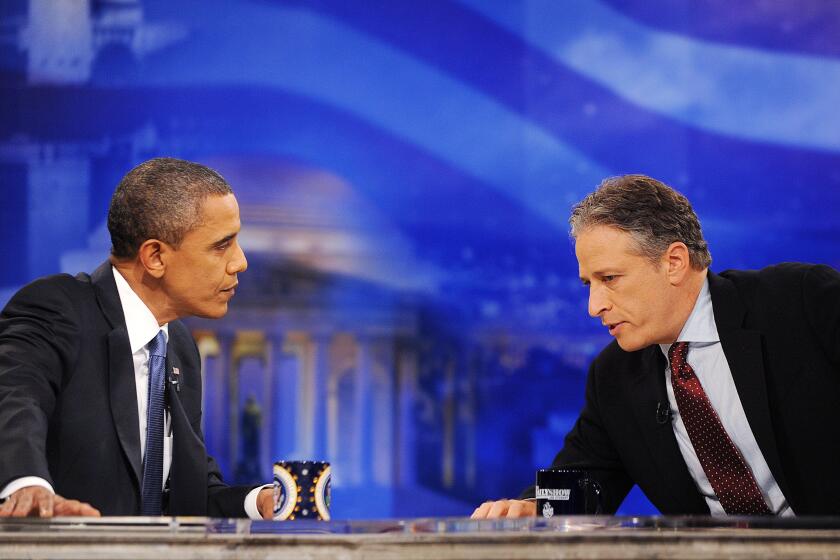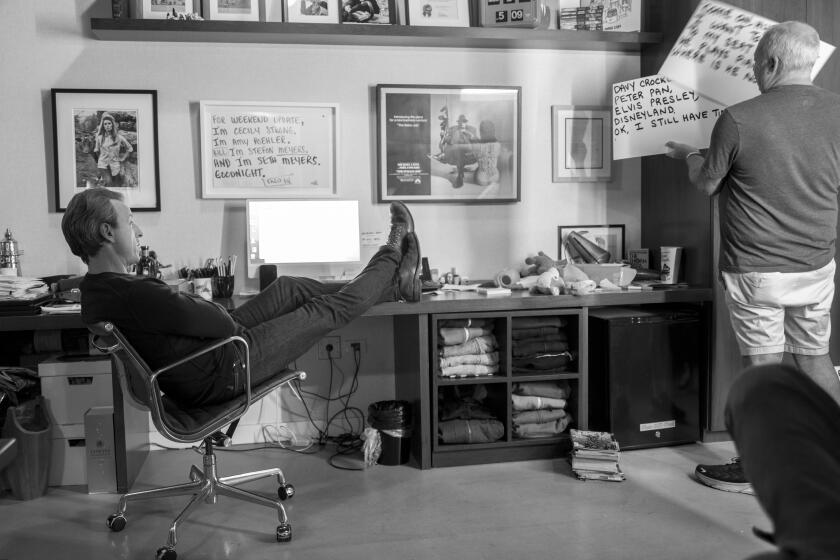After 10 years on ‘The Tonight Show,’ Jimmy Fallon remains a departure from his predecessors
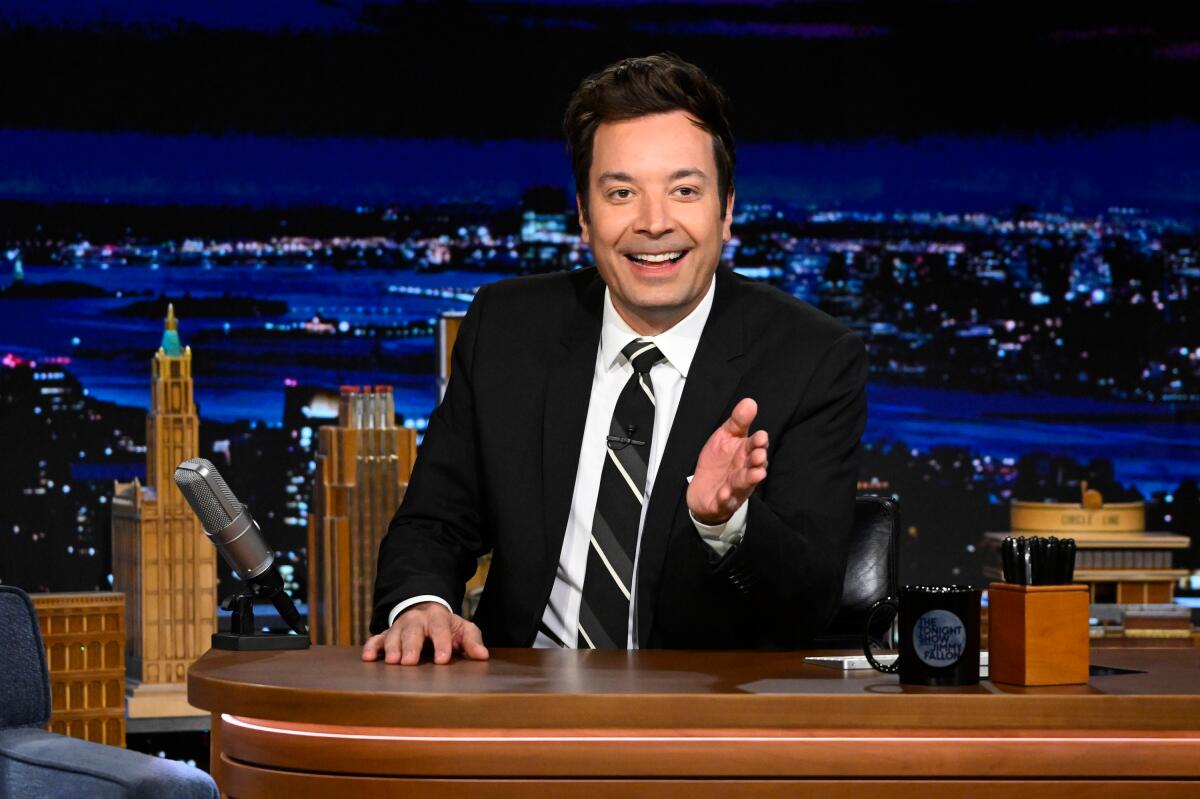
On Tuesday night, NBC will air a two-hour special celebrating Jimmy Fallon’s 10 years as host of “The Tonight Show.” It’s a clip show, which is to say, for you younger viewers, it’s like YouTube, but on TV, but you don’t get to choose the videos.
Strictly speaking, notwithstanding the time slot and the name, it’s a 15th anniversary for Fallon, who was doing substantially the same show for five years at 12:35 a.m., as “Late Night with Jimmy Fallon” — the slot now occupied by Seth Meyers and formerly by Conan O’Brien. Yet when it comes to “The Tonight Show,” the name and the time matter; so storied and prestigious is this tract of post-prime-time real estate that veritable range wars have been fought over it. Friendships ended. Books were written. One became an HBO TV movie. The people took sides. Team Dave. Team Jay. I’m with Coco. You remember.
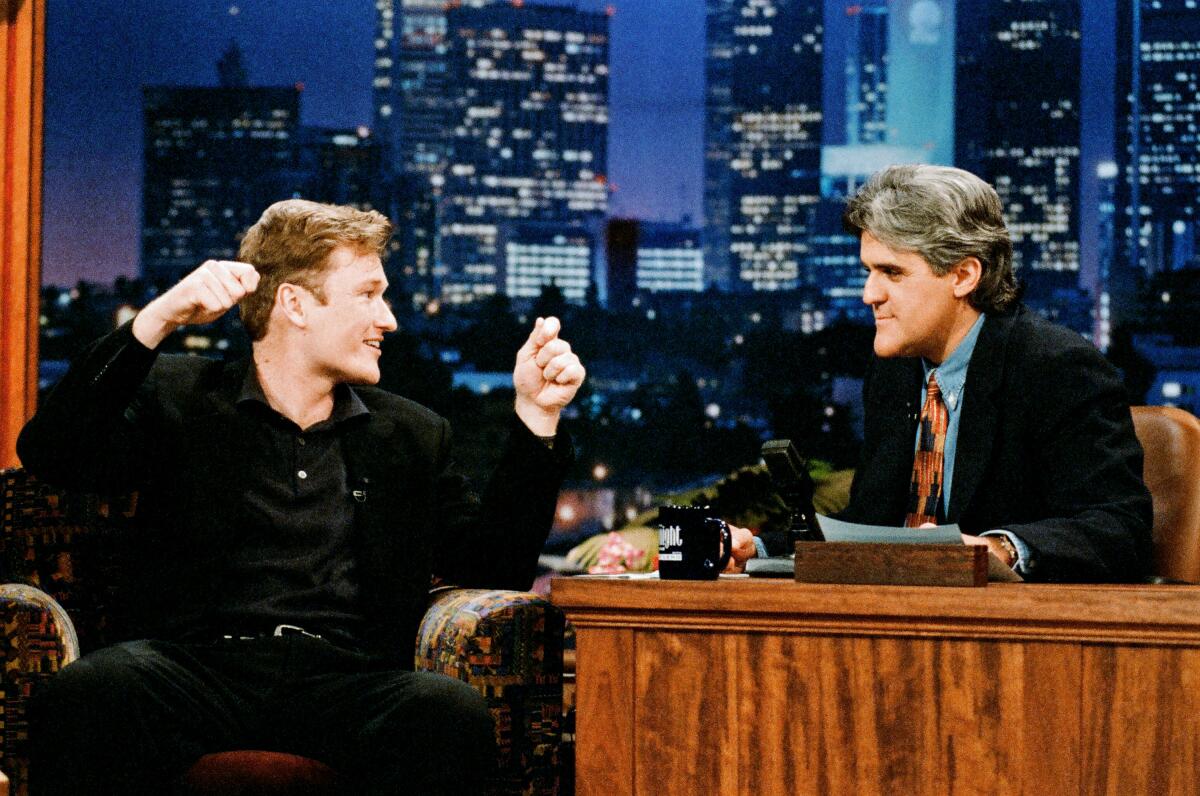
The brand itself is having an anniversary of its own this year. It’s been nearly seven decades since it premiered, in September 1954, as “Tonight” with Steve Allen as host, back when all television was exclusively what’s now called “linear,” in the sense that you might go from point A to point B with a single network, from the time you rose until the time you retired. (An even more likely possibility before the introduction of the remote control.) With its morning shows, its afternoon soaps and game shows, its prime-time slate, its late and eventually late-late-night programming, broadcast TV mirrored and modeled the day, waking you up, tucking you in. And it was tacitly understood that an audience that elected to stay up after the local news, past midnight on weeknights, might be ready for something relatively sophisticated, cosmopolitan and a little risque.
Though streaming and social media have upended how viewers consume late-night series, innovation on the shows themselves has been much more stagnant.
“The Tonight Show” will of course mean something different depending on when you boarded that train, just as your “Saturday Night Live” — nearing 50 itself — will not necessarily be mine. Allen and Jack Paar, who followed him, built the architecture and audience, but more than anything the show, and the shape of late-night television, was defined over the course of 30 years by its third host, Johnny Carson, a figure of such cultural import that Beach Boy Brian Wilson wrote a song about him. (“Don’t you think he’s such a natural guy?/The way he’s kept it up could make you cry.”)
From 1962 to 1992, Carson owned late night while the competition came and went. It wasn’t until David Letterman opened up shop with “Late Show” at CBS, after NBC appointed Jay Leno to succeed Carson, that “The Tonight Show” had a long-haul competitor — one that, under Letterman, also became an institution.
To be sure, many viewers will have no contemporary memory of Carson — though clips of the show are all over YouTube and a selection of episodes streams on Peacock as “The Johnny Carson Show.” (Most of Carson’s 1960s shows have unfortunately been erased.) Loose and convivial, the host sincere, curious, good-natured and good-humored, it was a Hollywood party, especially in the years it stretched to a leisurely 90 minutes, with room to stretch out and guests collecting on the couch.
Carson’s “Tonight Show” was not quite the promotional mill talk shows have become, but more a clubhouse, as in Friars, that brought back guests over and over, not because they had something to sell — though comedians are always about to appear somewhere — but because they were entertaining, because Carson liked them or in any case liked the energy they brought to the show. It was a space that famously could turn an aspiring comedian into a successful one overnight, if given the host’s benediction — a wave to come to sit.
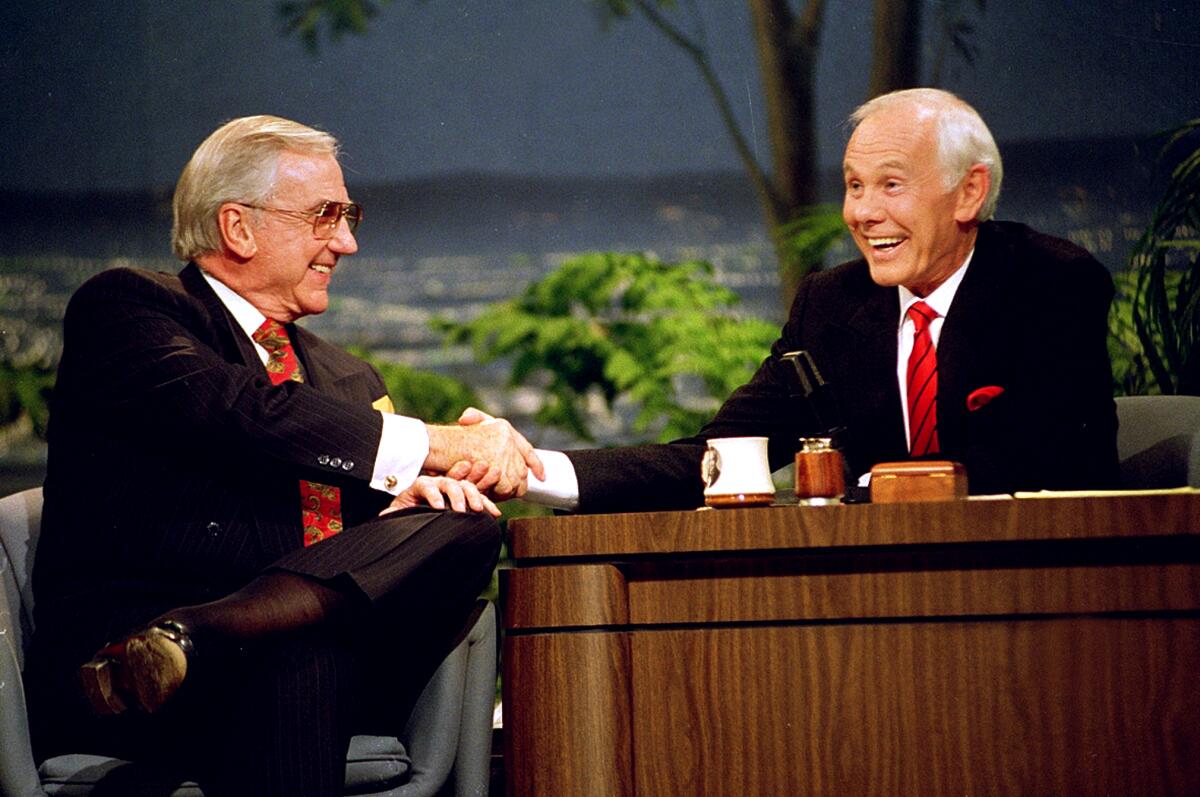
This family feeling extended to the guest hosts — Carson’s regular absences and shrinking work week were legendary — most of whom were guests before they were hosts, and some of whom got their own talk shows afterward. These included Robert Klein, Jerry Lewis, Flip Wilson, George Carlin, Woody Allen, Sammy Davis Jr., Groucho Marx and David Brenner. Joan Rivers, one of the few woman among them, earned Carson’s enmity by accepting a deal with Fox to host her own competitive talk show; Garry Shandling, whose own big break came from a “Tonight Show” appearance, poured the experience into “The Larry Sanders Show.”
Carson had been Letterman’s lead-in for 11 years; the two were mutual admirers and professionally close. Their styles were wildly different, but their energy and intelligence were similar, and it was a shock to many when NBC gave the spot to Leno. (“Just how pissed off are you?” Carson asked a guesting Letterman as it was all going down.) Leno’s “The Tonight Show” maintained the brand without refreshing it; he had already been subbing for Carson as “permanent guest host,” and under his captaincy the changes were largely cosmetic. It lacked the warmth of Carson’s show, where Carson, sidekick Ed McMahon and bandleader Doc Severinsen made a nice little gang. Leno, who almost never missed a day’s work, essentially stood alone. But his show remained popular.
With Letterman at CBS competing directly with Leno at NBC, two strains of late night were defined: the former’s forward-looking, oddball approach; the latter’s more controlled, old-fashioned meat and potatoes comedy. O’Brien’s “Late Night” was in the Letterman vein, though more kinetic, more surreal, more disturbing, with the host ever ready to make a fool of himself. Like Letterman, he developed a dedicated, cultish following, enough so that he was designated to replace Leno at the end of Leno’s contract in 2009 — a job Leno did not particularly want to give up. An unsatisfactory compromise, which gave Leno a nightly hour of prime time, collapsed seven months later, when NBC suggested an even worse compromise, giving Leno a half-hour at 11:35 p.m., which “The Tonight Show” would follow at 12:05 a.m.
O’Brien turned them down, releasing a statement that declared, “I sincerely believe that delaying ‘The Tonight Show’ into the next day to accommodate another comedy program will seriously damage what I consider to be the greatest franchise in the history of broadcasting. ‘The Tonight Show’ at 12:05 simply isn’t ‘The Tonight Show.’” (So that’s what’s in a name, and a time.) NBC bought him out of his contract. (“You can do anything you want in life,” O’Brien memorably told his viewers, “unless Jay Leno wants to do it too.”) And in 2010, O’Brien wound up at TBS, with an 11 p.m. show, “Conan,” that imported his “Tonight Show” staff and ran for 11 years.
Which brings us to Fallon, who uncontroversially followed the second Leno administration, moving up from 12:35 a.m. and ceding the space to “Late Night with Seth Meyers,” the only remaining talk show in that time slot. What about Fallon’s show makes it “The Tonight Show,” as opposed to, you know, just another hourlong talk show? (“Jimmy Kimmel Live!” is arguably the program that’s the most like Carson’s.) While it observes the structural niceties — monologue up front, followed by desk bits and sketches, followed by guests, followed by musical guest — it is very much a departure, with its sights on Generation X and younger, and a different approach to fun. But it does share some things with the brand.
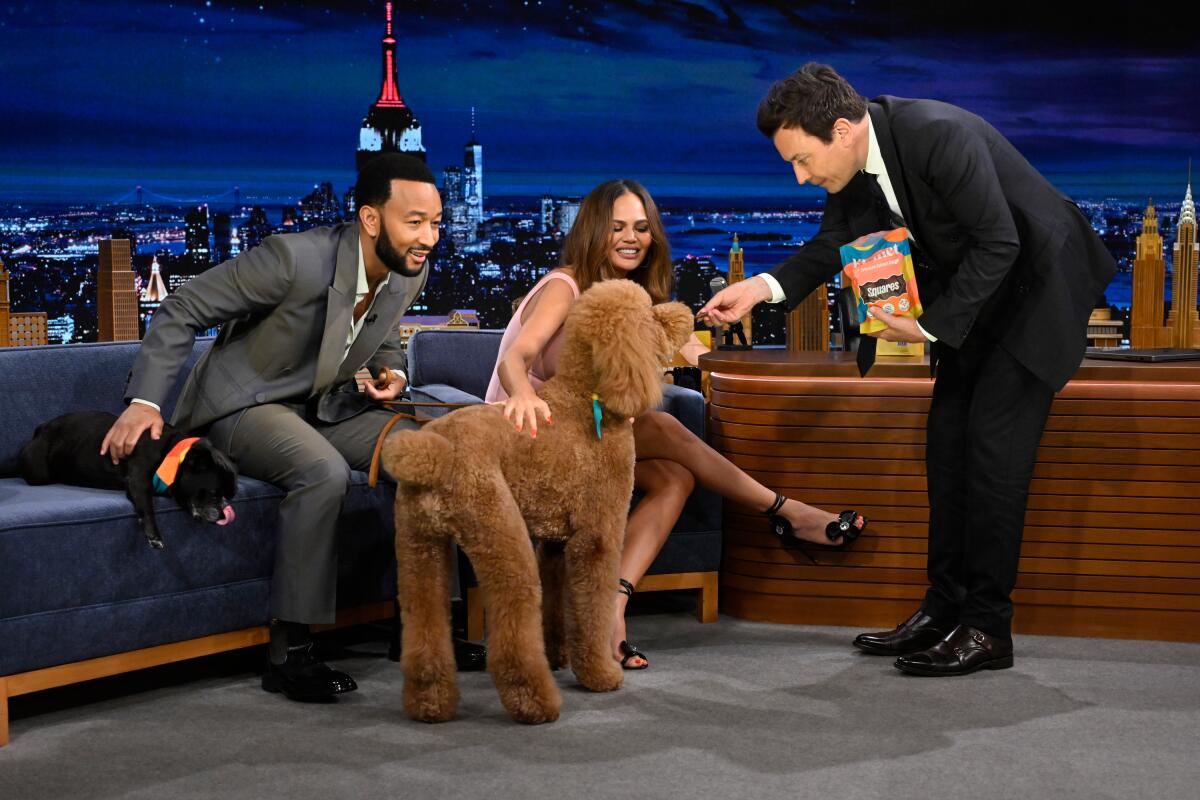
It’s taped in Studio 6B at 30 Rockefeller Center, where both Paar and Carson (before his move to Burbank) made their shows. It’s a party, and, notwithstanding the news-of-the-day monologue and an occasional Washington-world guest, essentially apolitical, certainly as compared to Stephen Colbert’s “Late Show” and to a lesser extent “Jimmy Kimmel Live!” It aims to humanize celebrities while preserving their glamour, though the strategy here is less about conversation, which is not Fallon’s strong suit anyway, than engaging them in games and challenges. It’s a teenage sleepover party, with pop stars.
With the writers’ strike lifted, The Times went behind the scenes with Seth Meyers and his team preparing for their first ‘Late Night’ in five months.
Fallon is almost 50 now, but he presents younger — he hasn’t appreciably aged in the job, and mixes well with guests half his age. He says “rad” without irony and gets away with it. As a host, he’s a large friendly dog. As an interviewer, he’s a percussionist, clapping his hands, banging his desk in a delight that can seem less than authentic — which is not to say it is. He’s a performer, a joiner, coming out from behind his desk as often as possible. He sings, he dances. Unlike Leno, or Letterman, or O’Brien, he doesn’t leave the studio much — because why would he? All his toys — and the Roots, his nimble house band — are there.
So what will the future hold for this franchise? Broadcast television won’t be any less challenged as new technologies muscle into home entertainment. It would be foolish to bet that an entity called “The Tonight Show” will still be around in another 70 years, if there’s anyone to watch it, or even a company called NBC, though it would also be foolish to bet that it won’t. “The Tonight Show” currently runs third in the ratings behind Colbert and Kimmel; but there are all kinds of metrics in modern television, what with the internet and all. And the network has thrown him an anniversary bash.
“My successor’s going to probably be an AI robot,” Fallon told “CBS Sunday Morning” last year. “Some robot talking about … how I laughed too hard.” He’s got another 12 seasons left to match Leno’s 22 — and another 20 to tie Carson, if that’s even what he wants, or anyone wants him to do. All one can say is that, whatever takes that name and time slot, and however that box is filled up, it will satisfy that same end-of-the-day need, offering some version, as Fallon described it, of “an hour of when you don’t have to think and you go, ‘Look at this idiot, he’s doing something ridiculous,’ and then you fall asleep.”
And in its DNA, you will find traces of Johnny Carson.
More to Read
The complete guide to home viewing
Get Screen Gab for everything about the TV shows and streaming movies everyone’s talking about.
You may occasionally receive promotional content from the Los Angeles Times.
